20 Wild Animals in Bangladesh [Wildlife in Bangladesh]
Want to know more about the wildlife in Bangladesh?
Discover 20 wild animals in Bangladesh in this post, as well as interesting facts about them. 🇧🇩
TABLE OF CONTENTS
Learn All About Bangladeshi Animals
Ready to learn all about Bangladeshi animals?
I’ve always been fascinated by animals, and by how they can be so different from one country to another. In this guide, we’ll focus on the many animals Bangladesh has on the land, in the sky, and underwater.
I’ve split the guide into 6 categories:
- Native animals from Bangladesh
- Endangered animals of Bangladesh
- What is Bangladesh national animal?
- How many animals native to Bangladesh?
- Which animal is only found in Bangladesh?
- What is the largest animal in Bangladesh?
Let’s dive in right away with our first category!
Native Animals from Bangladesh
Bangladesh is a country located in South Asia. It is the eighth-most populous country in the world, with more than 163 million inhabitants. It is bordered by India, Myanmar, Nepal, and Bhutan, and its capital city is Dhaka, which counts more than 8,906,000 inhabitants (but more than 21,741,000 if you include the metropolitan area!).
An interesting part of the country that I wanted to tackle is its wildlife. In light of that, I have listed the best of it, and I hope you will love learning what animals live in Bangladesh.
Here’s the Bangladesh animals list.
1. Gaur
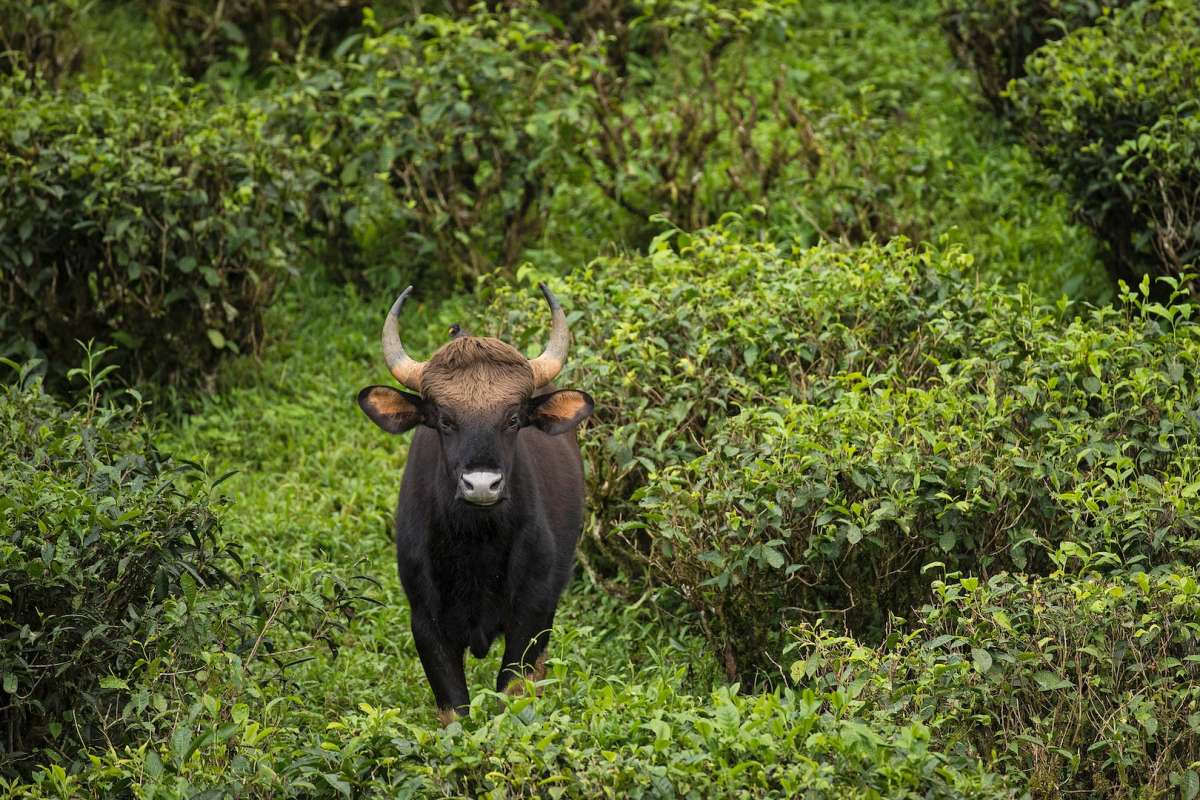
- Name: Gaur
- Scientific name: Bos gaurus
- Conservation status:
The gaur, also known as the Indian bison, is a large bovine native to South and Southeast Asia. Over the past 3 generations, its global population has declined by 70 percent, and it is now extirpated from Sri Lanka. Its population is only stable and even increasing in well-protected areas.
This bovine is critically threatened by poaching and hunting (for home consumption sometimes!). They are also used as trophies and for the meat trade.
2. Clouded leopard
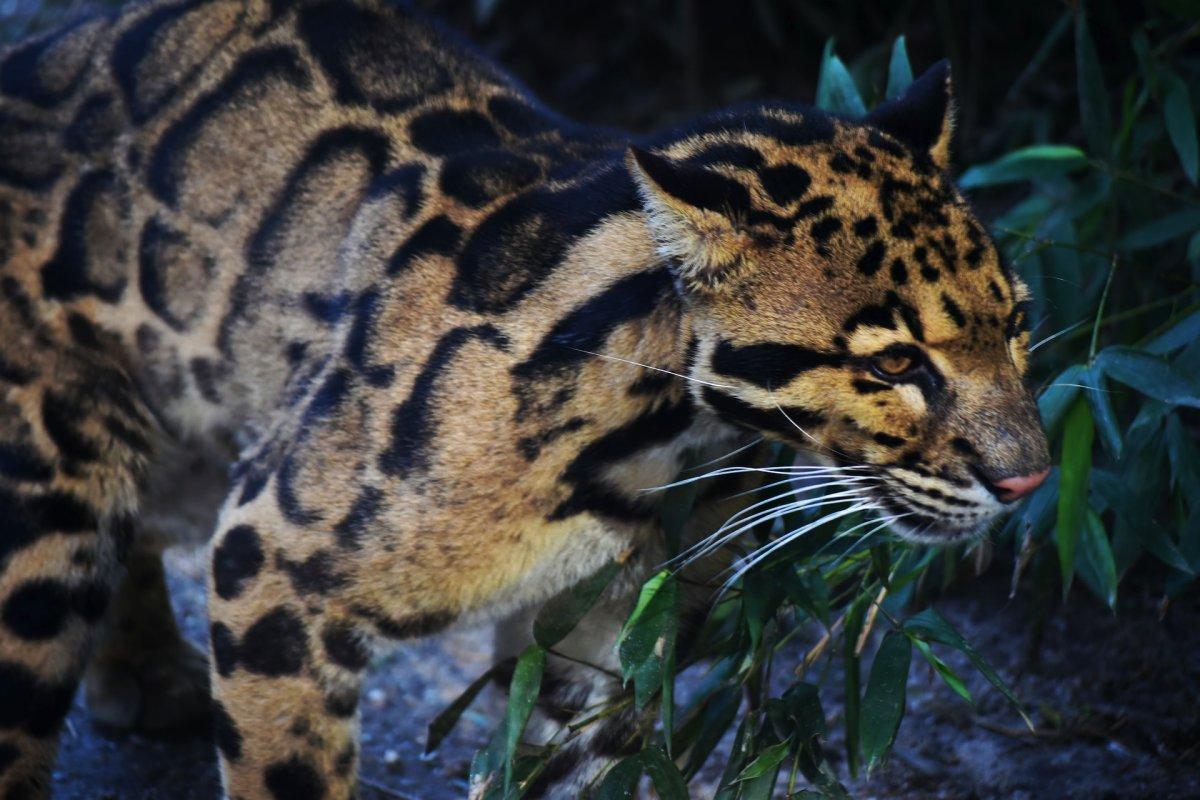
- Name: Clouded leopard
- Scientific name: Neofelis nebulosa
- Conservation status:
The clouded leopard is a species of leopard native to Southeast Asia. It can now be found throughout most of southern Asia, including Bangladesh. It usually inhabits dense forests in the Himalayas and feeds on terrestrial and arboreal vertebrates. Once it is done eating, it usually retires into trees to digest and rest.
Clouded leopard populations are severely threatened by human expansion and commercial poaching. It is sadly not uncommon to see coats made of clouded leopard skins.
3. Blue whale
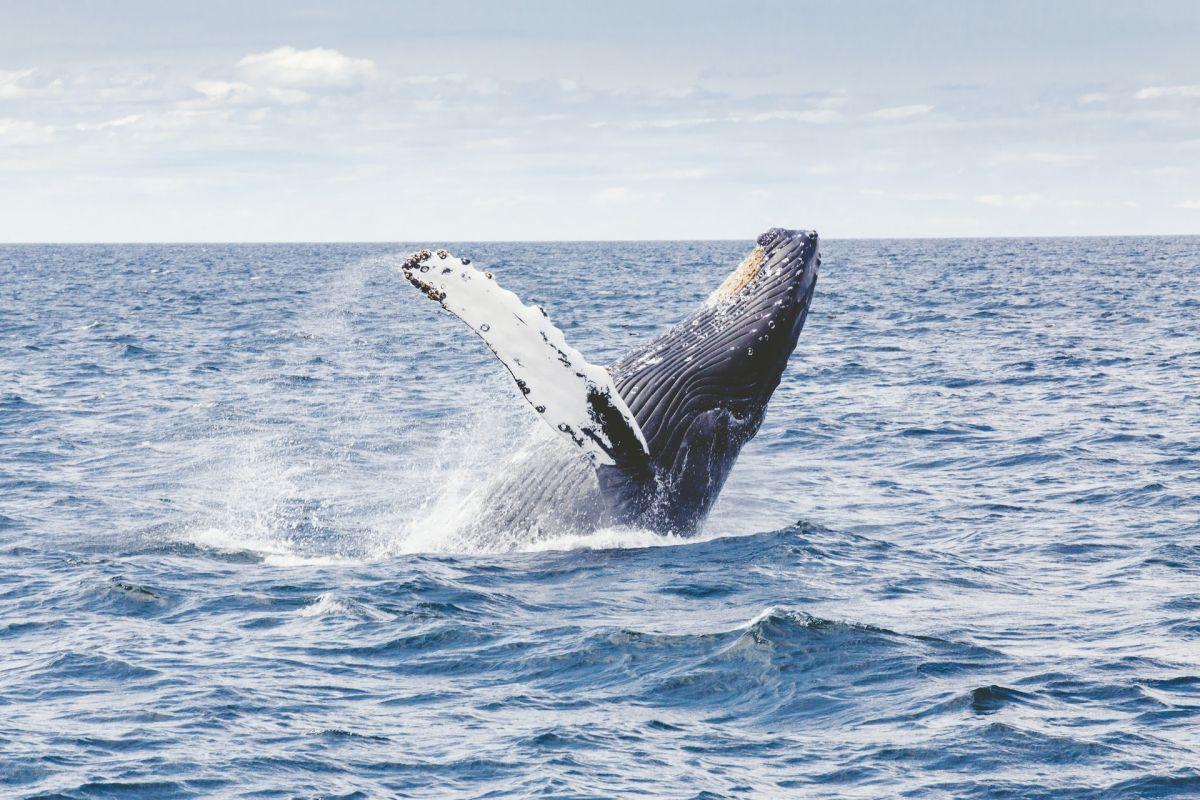
- Name: Blue whale
- Scientific name: Balaenoptera musculus
- Conservation status:
The blue whale is famous on the whole planet for being the largest animal to have ever existed. Its length can reach 29.9 m / 98 ft, and it can weigh up to 199 tonnes / 196 long tons!
It used to live in all the Earth’s oceans until the end of the 19th century, but after having been extensively hunted, it is now endangered and faces several threats. Its major threats are man-made (pollution, climate change, and ship strikes) and natural (killer whales).
4. Indian pangolin
- Name: Indian pangolin
- Scientific name: Manis crassicaudata
- Conservation status:
Pangolins are very interesting animals. They are basically scaly anteaters that have a peculiar defensive posture, in which they roll up… and cannot be touched.
The Indian pangolin is one of them, and it can be found throughout the Indian subcontinent. The color of its scales is adapted to the color of its environment. During the day, this pangolin rests in deep burrows, before becoming active at night and feeding on ants and termites.
5. Bengal slow loris
- Name: Bengal slow loris
- Scientific name: Nycticebus bengalensis
- Conservation status:
The Bengal slow loris is a small primate native to the Indian subcontinent and Indochina. It inhabits evergreen forests, and it is an arboreal and nocturnal animal. Sadly, it is threatened by the exotic pet trade and traditional medicine, making it an endangered species.
In order to mate, females attract males with a loud whistle and reproduce approximately every year. The Bengal slow loris can live up to 20 years, and a toxin in its brachial gland can be used to learn more information like age, sex, health, and social status.
6. Binturong
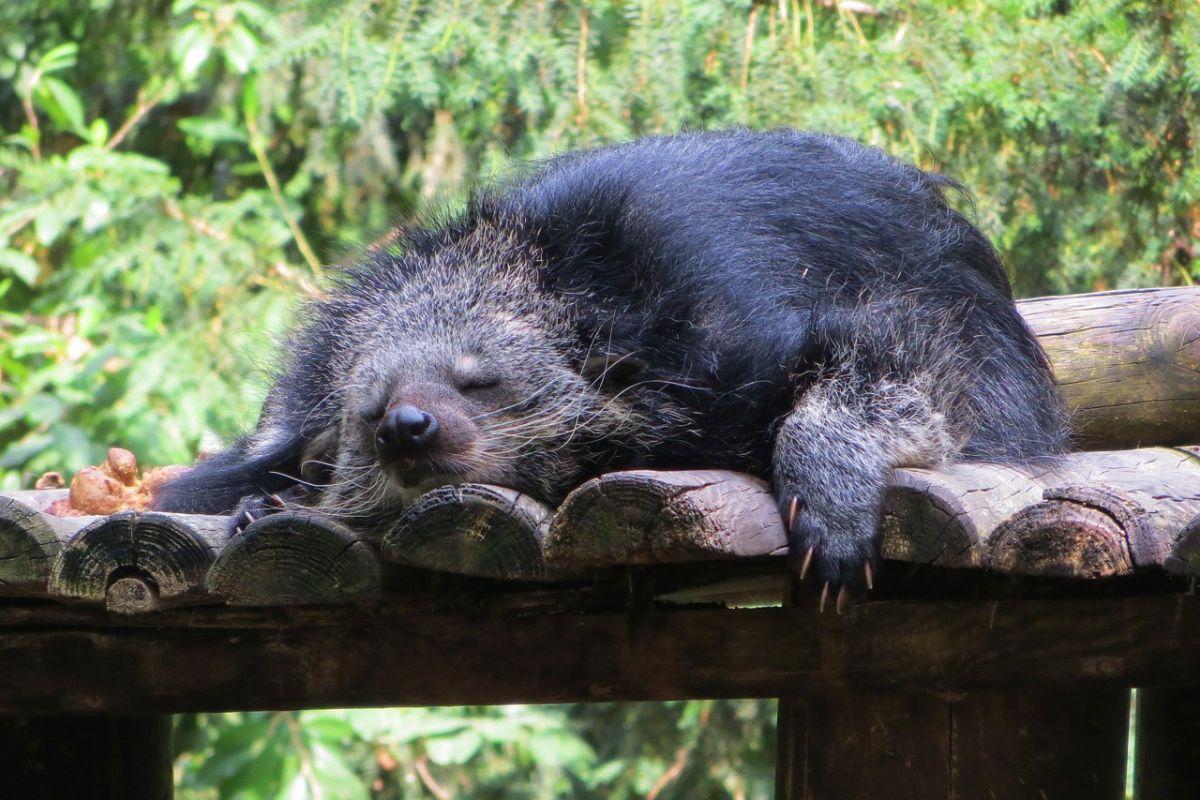
- Name: Binturong
- Scientific name: Arctictis binturong
- Conservation status:
The binturong, fittingly nicknamed “bearcat”, is the only living species of its genus. Its scientific name comes from Greek, and it means “bear-weasel”. It is a strange-looking animal that looks both like a bear, a weasel, and a cat.
It is active during both day and night, and it is omnivorous: it feeds on small mammals, birds, fish, insects, and fruits. It is threatened by habitat loss and logging. Its skin and meat are also often traded, and sometimes it is kept as a pet.
7. Sun bear
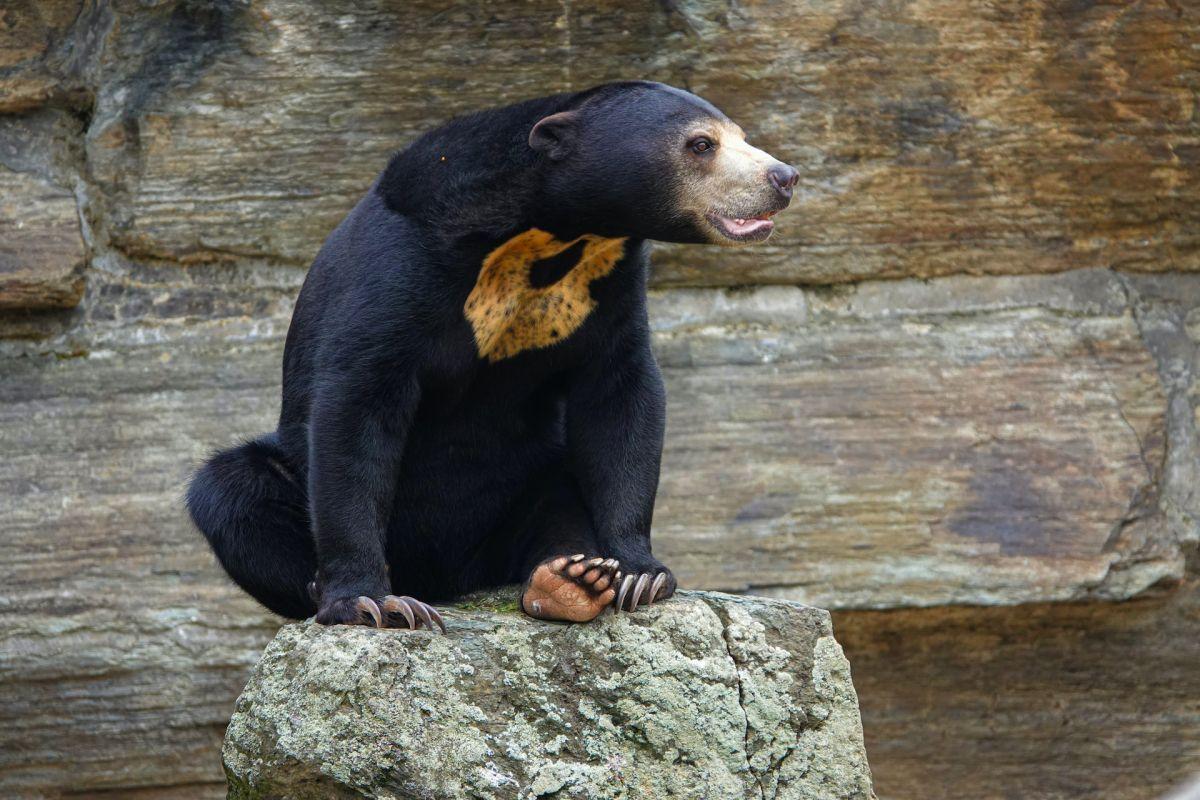
- Name: Sun bear
- Scientific name: Helarctos malayanus
- Conservation status:
The sun bear is a species of bear renowned for its arboreal prowess. It is in fact the most tree-living of all bears and is indeed an excellent climber. It usually sleeps in trees 2 to 7 meters (7 to 23 ft) high and is active during the day.
This bear has solitary behavior and is an omnivore. It will eat anything from ants and bees to birds and deer. Sadly, its global population is said to have declined by more than 35 percent over the course of the last three decades.
8. Asian small-clawed otter

- Name: Asian small-clawed otter
- Scientific name: Aonyx cinereus
- Conservation status:
The Asian small-clawed otter is a species of otter native to South and Southeast Asia. Its name comes from its unusually short claws. It inhabits bodies of water, like mangrove swamps or freshwater wetlands, and feeds on crabs and other aquatic animals. Most of the time, it lives in pairs, but it was already seen in groups of up to 12 individuals.
This otter is threatened by poaching for its fur and by the destruction of habitats.
9. Northern plains gray langur
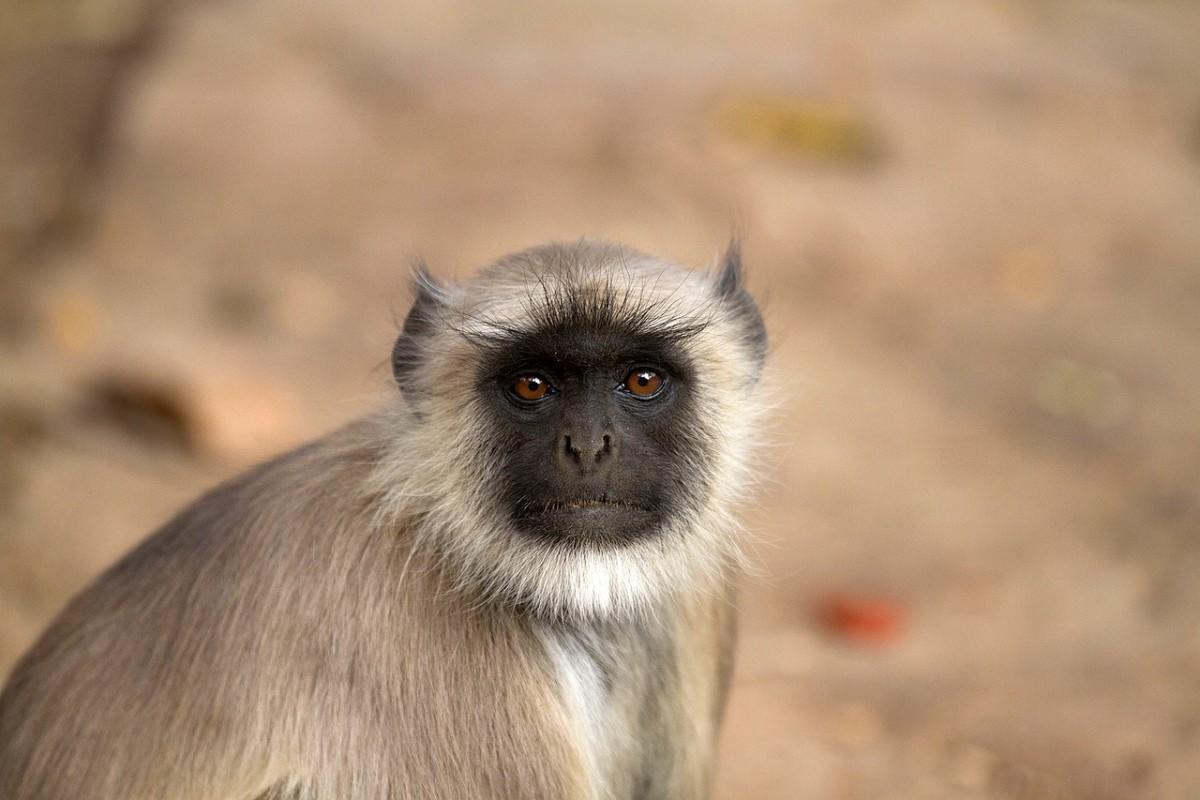
- Name: Northern plains gray langur
- Scientific name: Semnopithecus entellus
- Conservation status:
Sad but true, the northern plains gray langur is one of the few animals on this list that are considered of least concern. Deforestation and other human disturbance are huge issues and severe threats to wildlife on the Indian subcontinent.
This langur is a species of primate that only lives in the northern parts of India and in the neighboring countries as well. Even though it is considered sacred in the Hindu religion, it is still attacked by dogs, killed on the road, and sometimes hunted for food.
10. Bengal florican
- Name: Bengal florican
- Scientific name: Houbaropsis bengalensis
- Conservation status:
The Bengal florican is the first bird on this list. There are less than 1,000 of them in the wild, making them critically endangered. There are only 2 Bengal florican populations on the planet: one on the Indian subcontinent, and one in Southeast Asia, in Cambodia and Vietnam.
This bird is most of the time silent but has a distinct call when disturbed. When it comes to mating season, males produce a deep humming sound.
11. Risso’s dolphin
- Name: Risso’s dolphin
- Scientific name: Grampus griseus
- Conservation status:
Risso’s dolphin, also known as the Monk dolphin in Taiwan, is a species of a dolphin named after Antoine Risso, who first described it in 1812. It can be found throughout most temperate and tropical waters, including off the coast of Bangladesh. It can even be found in Alaska!
Almost all of their diet is made of squid, and they hunt at night. In some countries, Risso’s dolphins are hunted: while in the United States, they are protected, they are still killed in Japan and in Indonesia for instance.
12. Indian flying fox
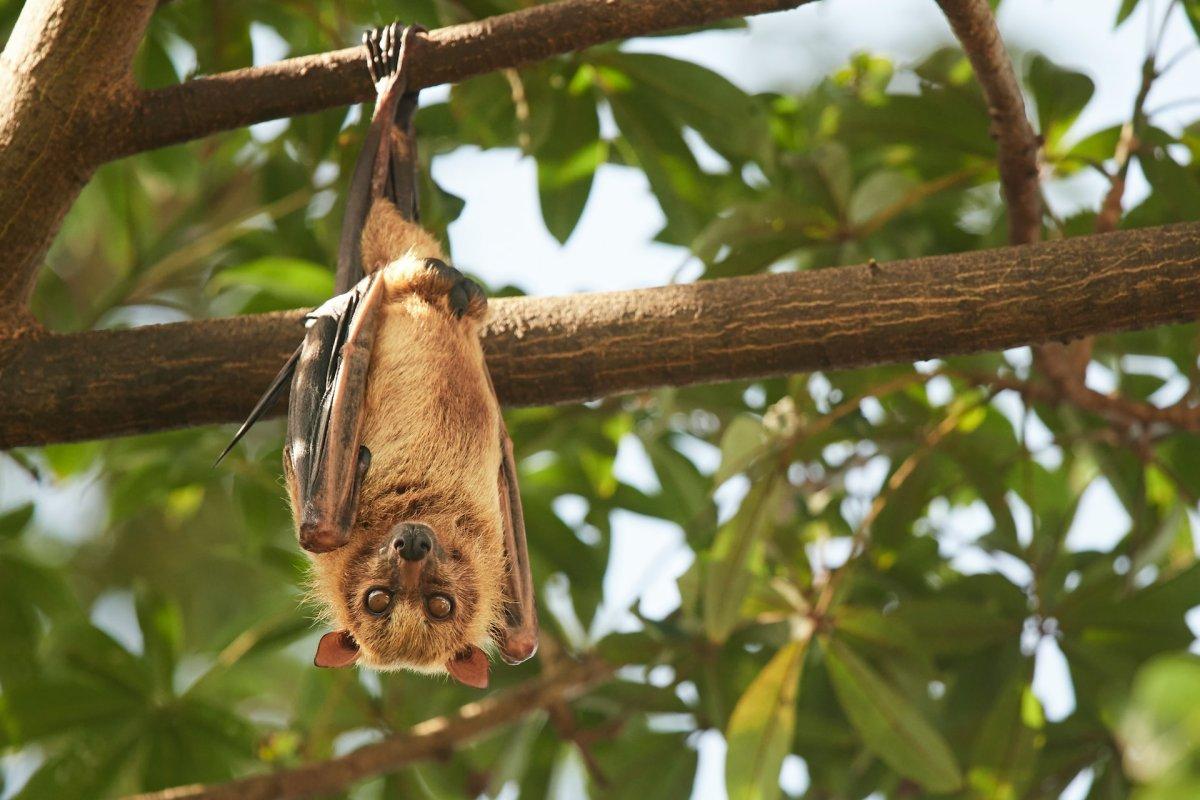
- Name: Indian flying fox
- Scientific name: Pteropus medius
- Conservation status:
The Indian flying fox is… not a fox. Flying foxes are the largest bats on the planet, and they are named this way due to their reddish coloring. It is a nocturnal animal that feeds on ripe fruits like mangoes and bananas.
This species of flying fox is often considered invasive due to its attacks on fruit farms. However, it actually participates in pollination, which largely compensates for its fruit consumption.
13. Western hoolock gibbon
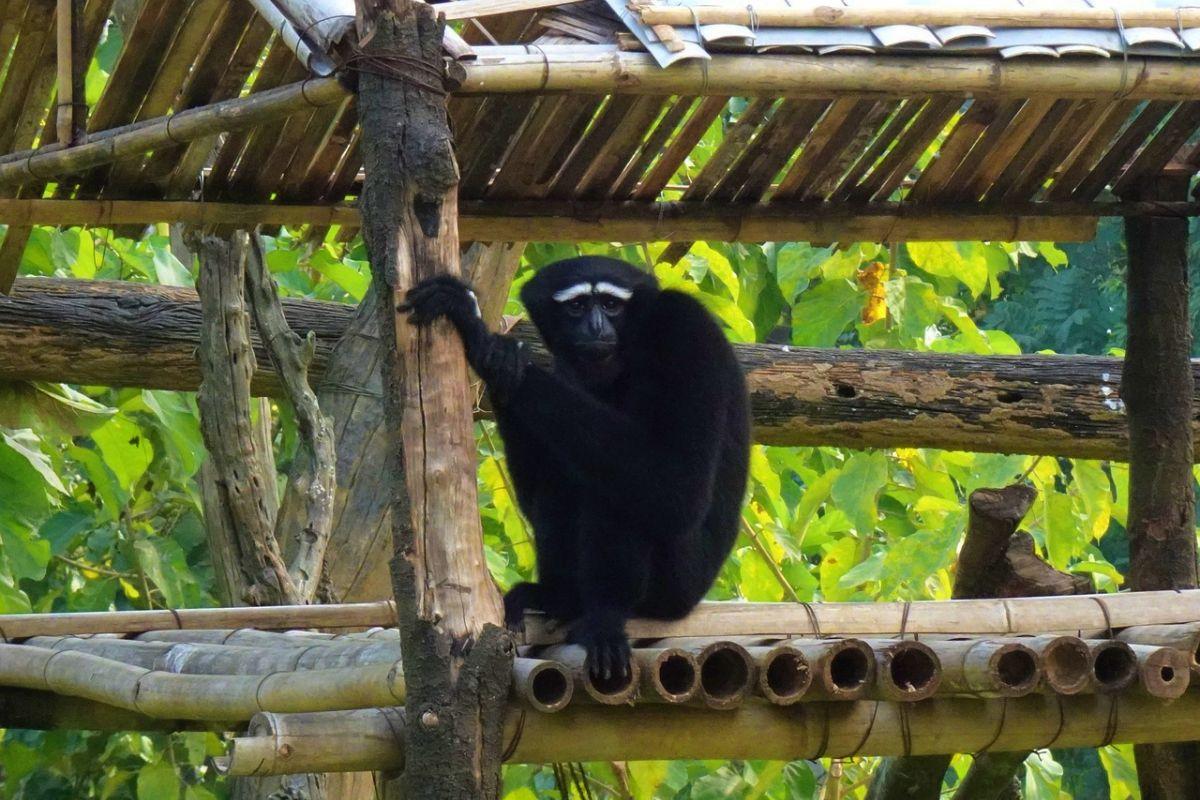
- Name: Western hoolock gibbon
- Scientific name: Hoolock hoolock
- Conservation status:
The western hoolock gibbon is a species of gibbon native to Bangladesh, India, and Myanmar. It inhabits a dense and broad-leaved canopy. Most of the time, it lives in mountainous areas or in dense forests.
What makes gibbons particular is their song, and the western hoolock gibbon is no exception to that. As a pair, they sing a loud and complex song from the top of the trees. It is separated into an introduction, an organizing sequence, and a great call.
14. Indian hog deer
- Name: Indian hog deer
- Scientific name: Axis porcinus
- Conservation status:
The Indian hog deer is a species of small deer native to Pakistan, Nepal, northern India, and Bangladesh. It was also found in Thailand and in China, and populations were introduced in Australia.
Its name comes from the way it runs like a hog, with its head hung low. It is hunted by leopards, tigers, and clouded leopards. The Indian hog deer is rarely seen in groups, but when it does it uses whistling sounds and barks to warn others.
15. Fishing cat
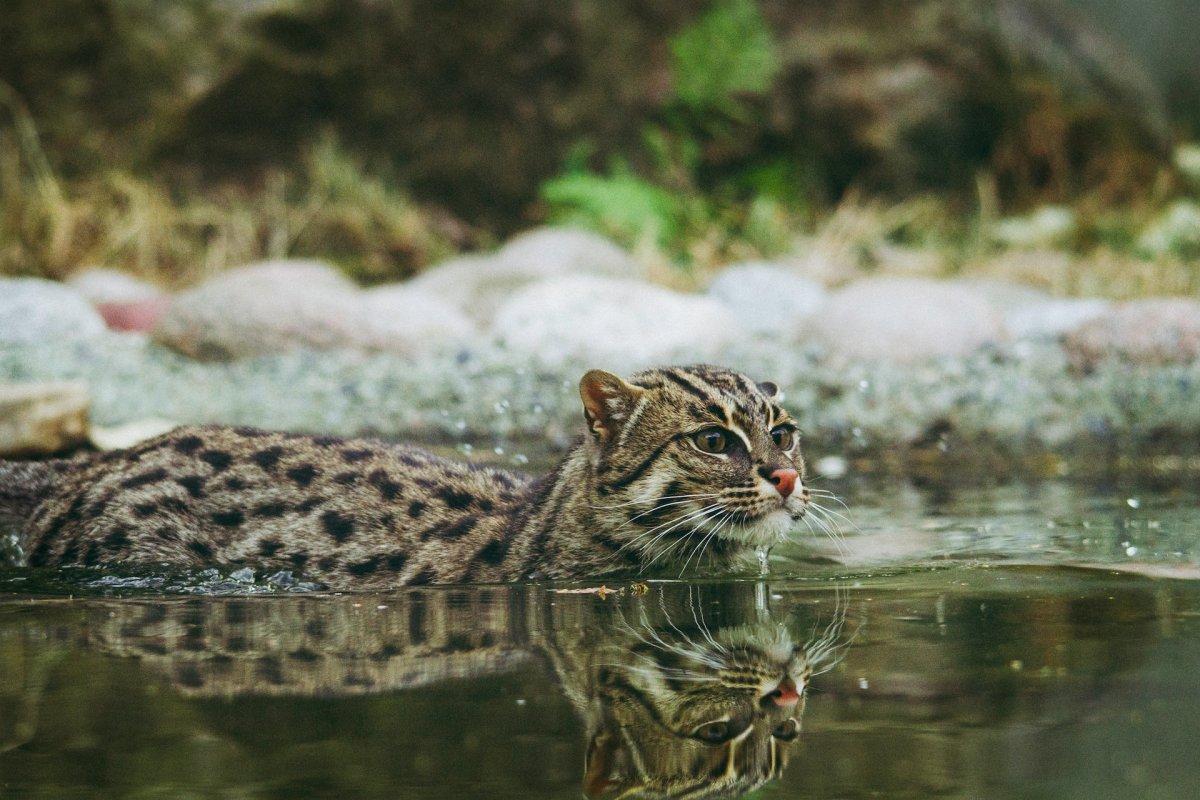
- Name: Fishing cat
- Scientific name: Prionailurus viverrinus
- Conservation status:
The fishing cat is a species of cat that primarily inhabits wetlands and that is nocturnal. It lives near bodies of water and can swim long distances, even underwater. Its name comes from its major prey, which accounts for 75 percent of its diet.
Sadly, it is severely threatened by the destruction of wetlands, either due to pollution or agricultural expansion. It can also be killed by humans in areas of conflict.
16. Crab-eating macaque
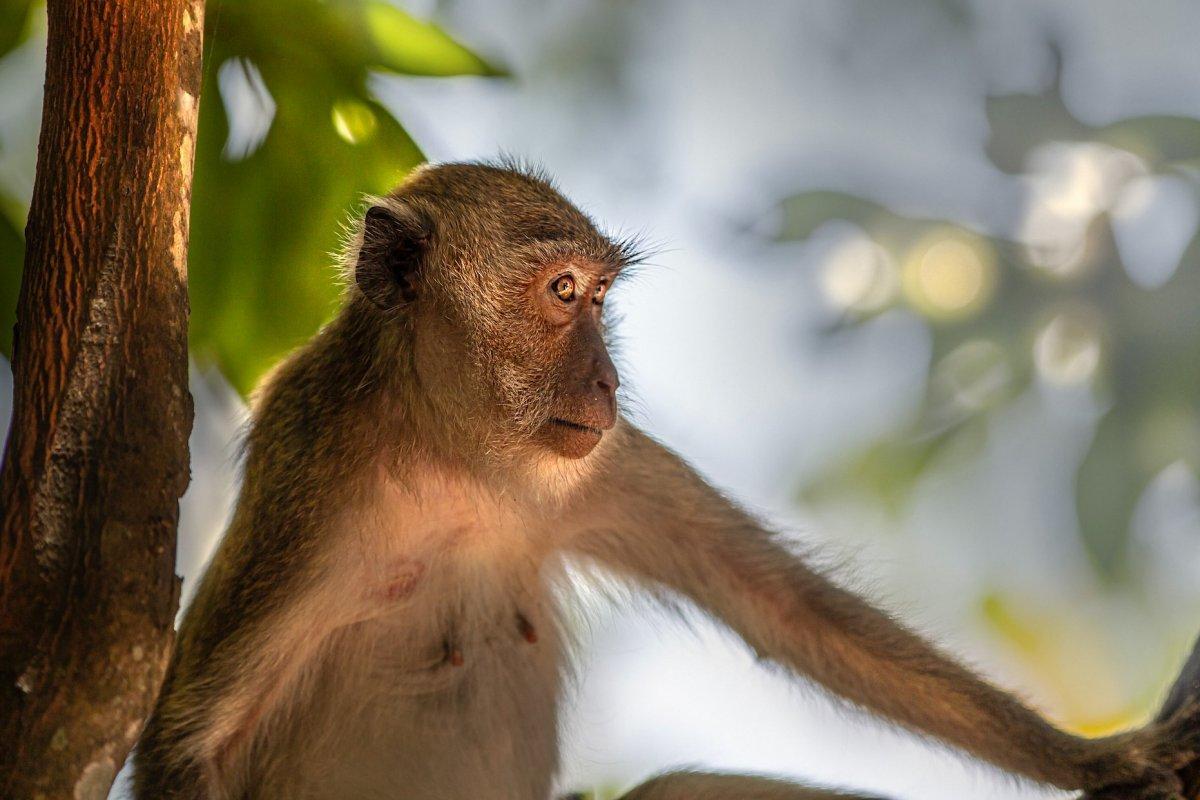
- Name: Crab-eating macaque
- Scientific name: Macaca fascicularis
- Conservation status:
The crab-eating macaque is a species of monkey that has historically always interacted with humans. At first, it was considered a nuisance, and was killed. After that, it became sacred in some temples in Bangladesh. Finally, it has recently been the subject of medical experiments.
Despite its name, it does not specifically eat crab. It is in fact an opportunistic omnivore that will feed on whatever it can, from leaves and flowers to frogs and lizards.
17. Bengal tiger
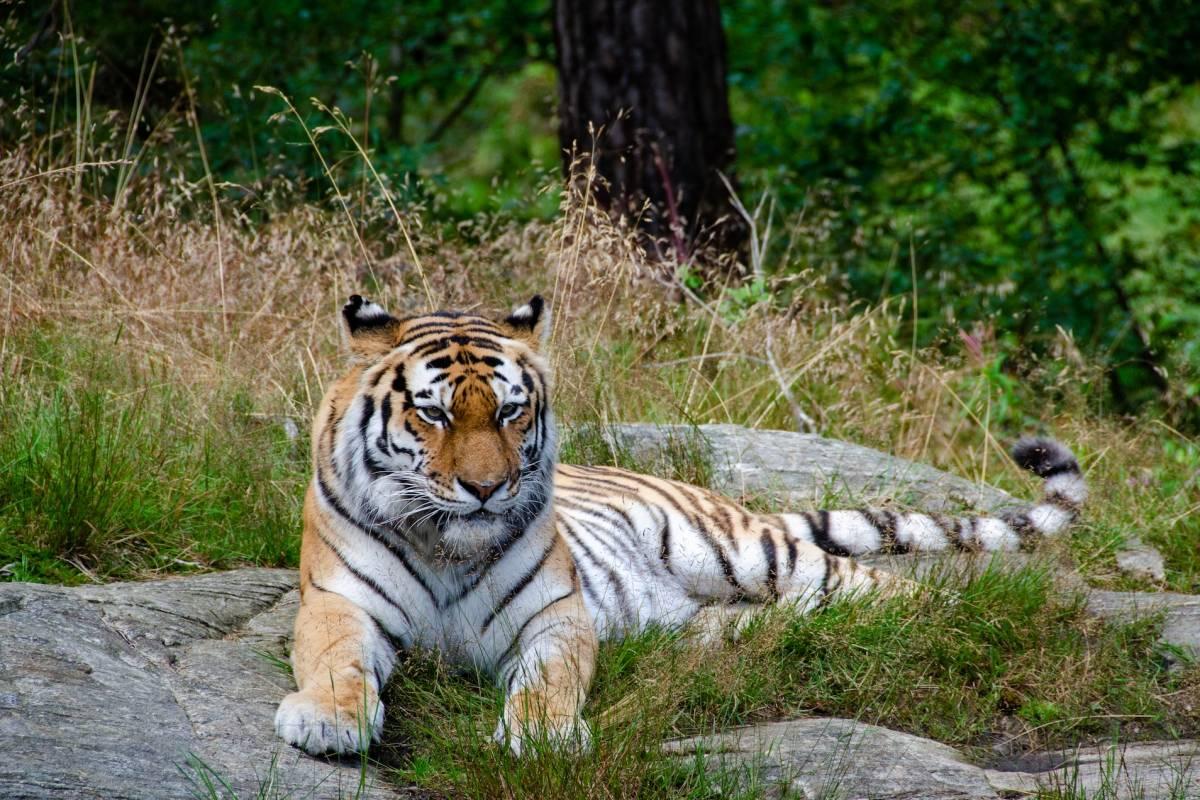
- Name: Bengal tiger
- Scientific name: Panthera tigris tigris
- Conservation status:
The Bengal tiger is probably the most famous animal in Bangladesh. It is also its national symbol, but it is sadly severely threatened by poaching and habitat loss. It is also one of the world’s most famous large animals, as it belongs to the world’s charismatic megafauna. There are currently less than 2,500 wild individuals, and the global population is on the decline.
Historically, there has always been a human-tiger conflict in Bangladesh and in India. There were so many tigers at the beginning of the 18th century that killing one would be rewarded!
18. Dhole
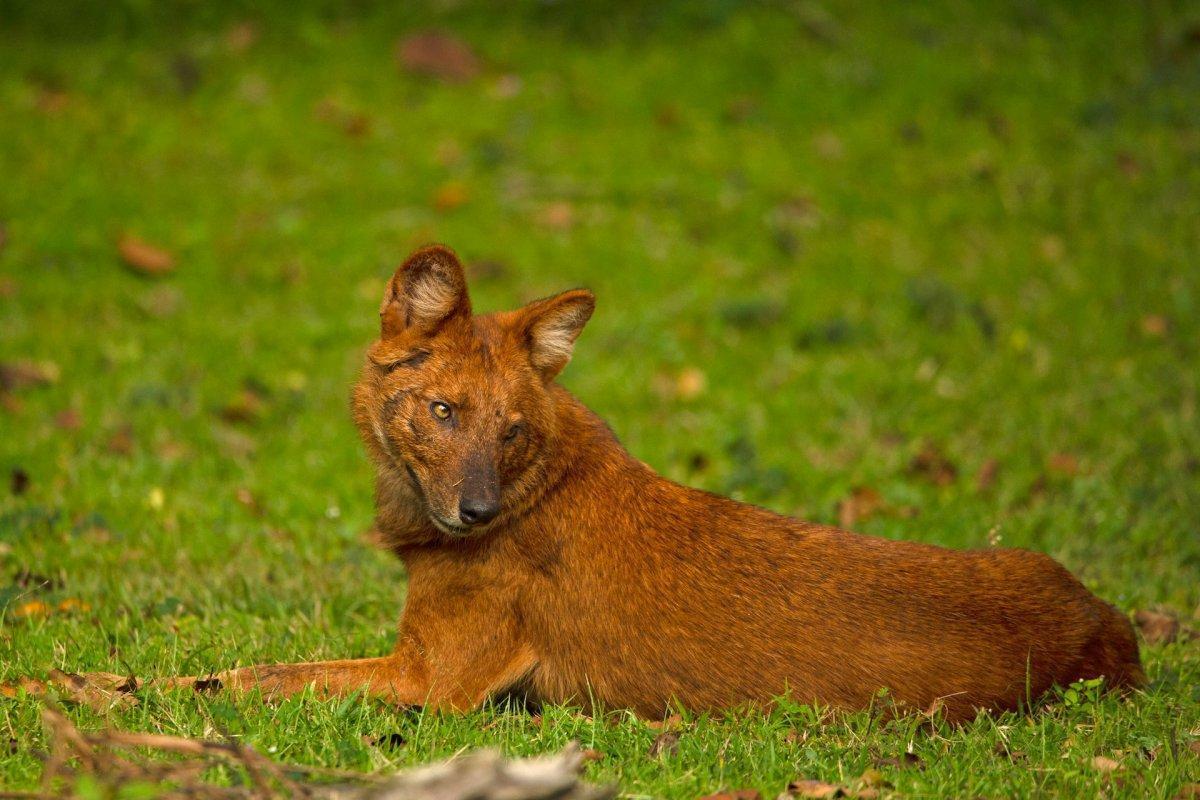
- Name: Dhole
- Scientific name: Cuon alpinus
- Conservation status:
The dhole is a species of wild dog that inhabits forest reserves in Bangladesh. It is currently threatened by habitat loss, loss of prey, and diseases it can get from domestic dogs.
You will often see dholes in large clans with many breeding females. In these groups, there are up to 40 individuals, though the most common size is 12 animals. They are pack hunters that are active during the day.
19. Hispid hare
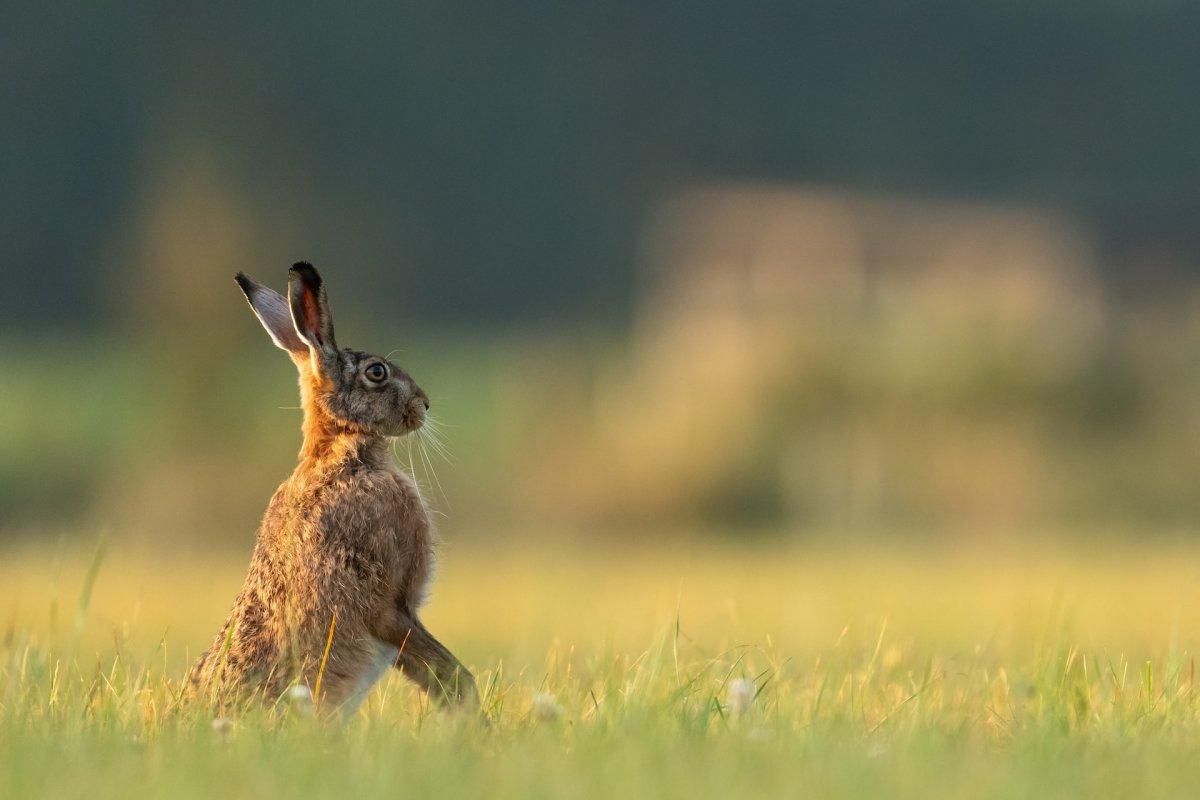
- Name: Hispid hare
- Scientific name: Caprolagus hispidus
- Conservation status:
The hispid hare is a species of hare native to South Asia. It used to have a large habitat, but it is now very fragmented. Its global population has steadily decreased over the course of the past decades, mainly due to agricultural expansion and human development.
This hare has very short ears and brown and dark brown fur. It is active at dawn and dusk and hides for the rest of the time.
20. Asiatic brush-tailed porcupine
- Name: Asiatic brush-tailed porcupine
- Scientific name: Atherurus macrourus
- Conservation status:
The Asiatic brush-tailed porcupine is a small species of rodent that inhabits Southeast Asia but can be found as far as Bangladesh and India. It is a nocturnal animal that inhabits tropical and subtropical forests. It usually lives on the floor, among bamboo and cane.
Even though it is currently listed as Least concern, not enough data is available to assess the evolution of its population. To this day, the Asiatic brush-tailed porcupine is still one of the rarest porcupines in southern Asia.
—
So there you have them, these were my 20 Bangladesh native animals. I hope you enjoyed this list and that you learned something new today.
In case you want to learn more about Bangladesh wildlife, feel free to keep reading, as I still have lots of things to tell you about:
Endangered Animals of Bangladesh
This is definitely the saddest part of the list, but it is very important to raise awareness. Because of this, let’s go through the list of endangered animals in Bangladesh.
Here are the animals in danger of extinction in Bangladesh.
- None
- Javan rhinoceros
- Largetooth sawfish
- Red-crowned roofed turtle
- Elongated tortoise
- Gharial
- and 33 more…
- Tricarinate hill turtle
- Masked finfoot
- White-winged duck
- Irrawaddy dolphin
- Grey reef shark
- and 75 more…
To see the full list of endangered species in Bangladesh, head over to the International Union for Conservation of Nature’s Red List.
What is the National Animal of Bangladesh?
The national animal of Bangladesh is the royal Bengal tiger.
The royal Bengal tiger is a symbol of might and of pride. It is a species of tiger native to the Indian subcontinent and is currently endangered due to poaching and loss of habitat. There are only around 2,500 wild individuals right now, including 300 to 500 in Bangladesh.
This tiger replaces the lion as the king of the beasts in eastern Asia cultures. It represents royalty, wrath, and fearlessness, and there is a special regiment in the Bangladesh Army named the “Bengal tigers”.
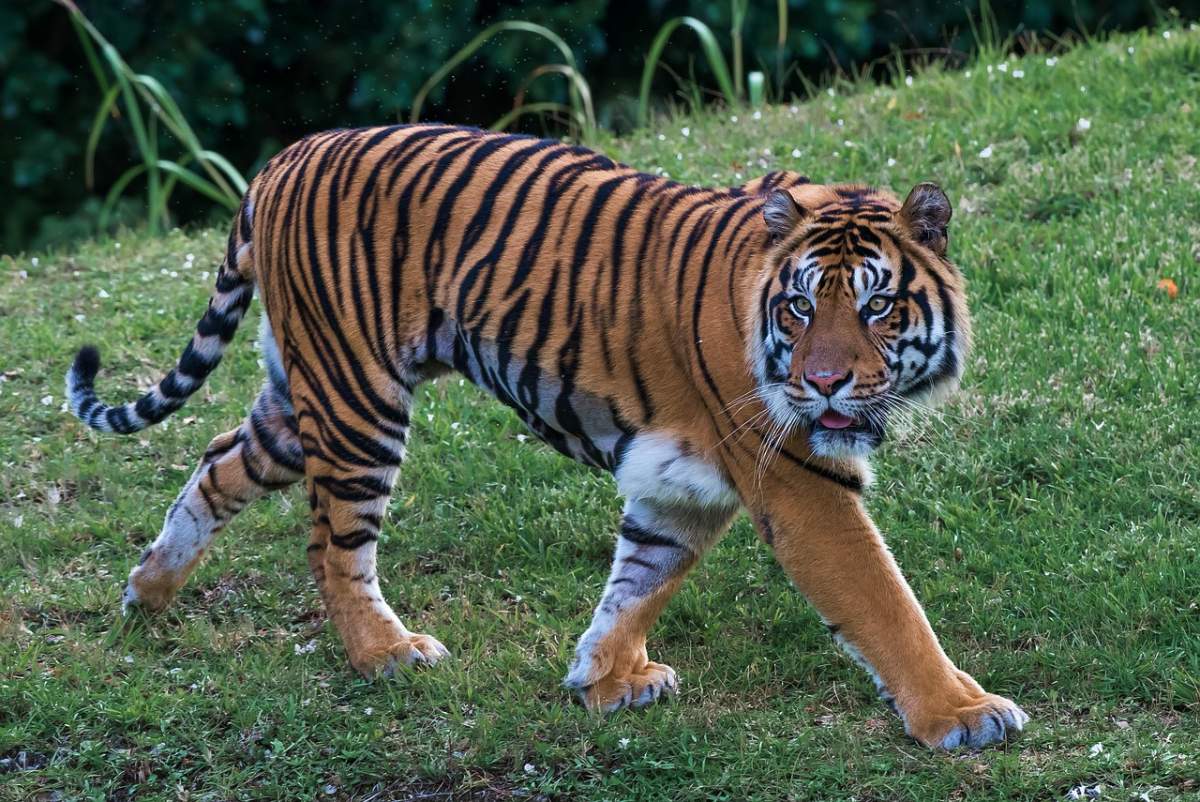
How Many Animals Native to Bangladesh?
What is the diversity of native animals found in Bangladesh?
Let’s look at the total number of species of Chordata (mammals, birds, fishes, and reptiles).
Total number of animal species in Bangladesh: 1,843 (14,589 in total in South and Southeast Asia)
Which animal is only found in Bangladesh?
There are a handful of endemic Bangladeshi animals. One of them is Reza Khan’s Bush Frog, a new species of cryptic bush frog. It can only be found in the northeastern parts of the country and was named after Mohammad Ali Rez Khan, a wildlife conservationist, and ornithologist.
There is a lack of documentation about it for the moment, considering it was only recently discovered (2020).
What is the largest animal in Bangladesh?
The Asian elephant is the largest terrestrial animal in all of Asia, including Bangladesh. It can be found throughout southeast Asia and on the Indian subcontinent. It is severely threatened by poaching and habitat loss, and its population has declined by more than 50 percent over the past decades.
Its size ranges from 2.4 m / 7.9 ft to 2.75 m / 9 ft. Males are larger than females.
More About Animals in the World!
Loved these Bangladesh animal facts? Want to see what animals live in other countries?
Then check out these posts:
Or click here to see ALL the facts up on the blog! Spoiler alert: there’s A LOT of them.
Share the knowledge! Click on the buttons below to share information about these famous Bangladeshi animals with your friends, and help them learn more about the world 🙂
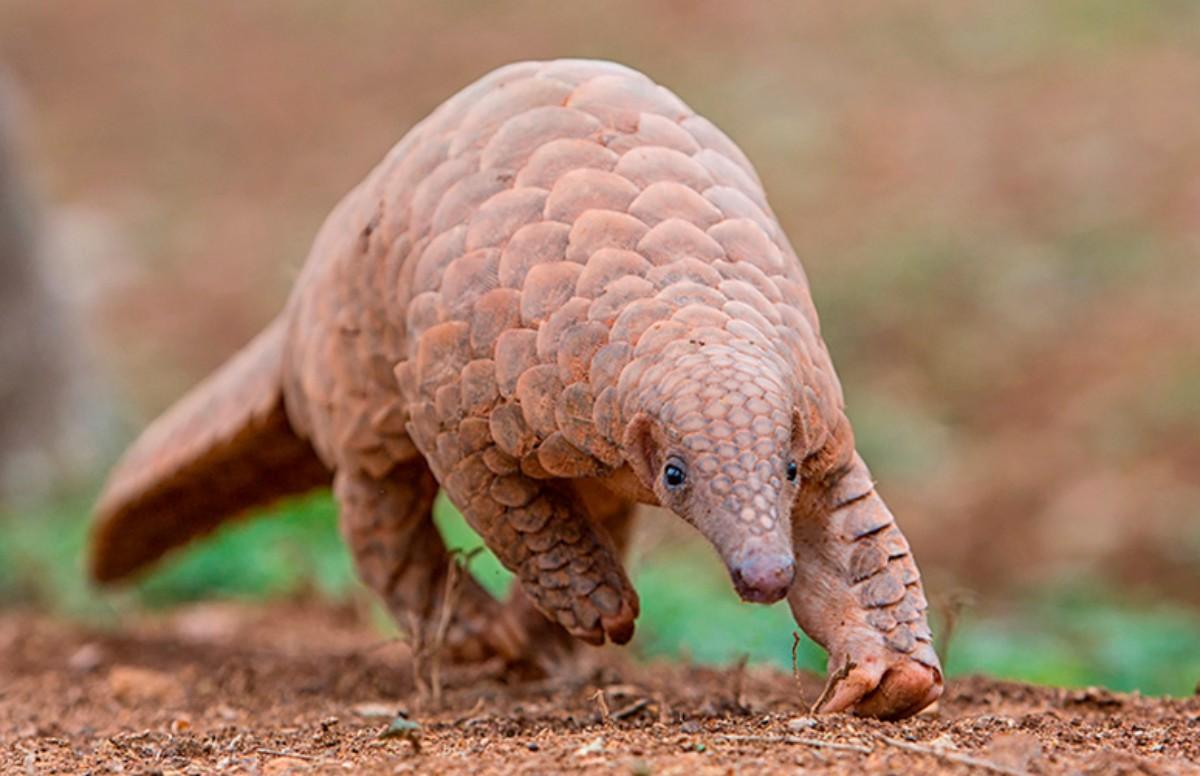
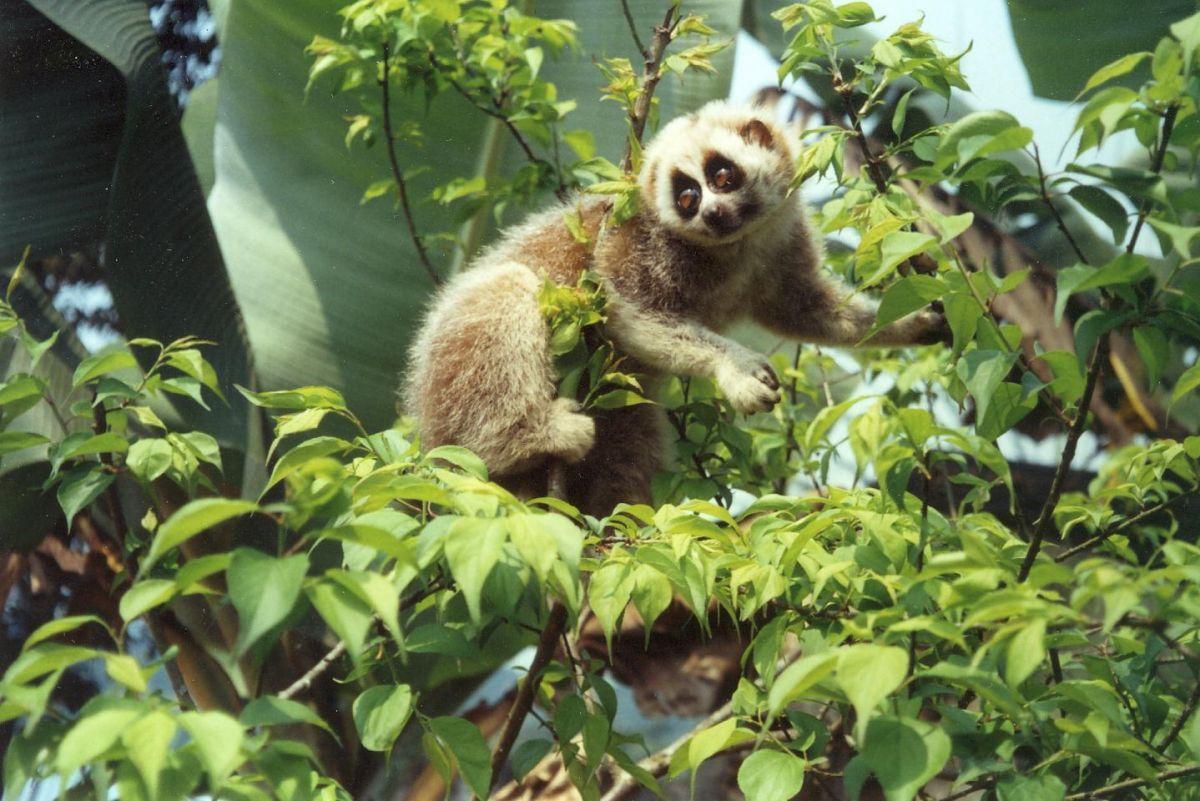
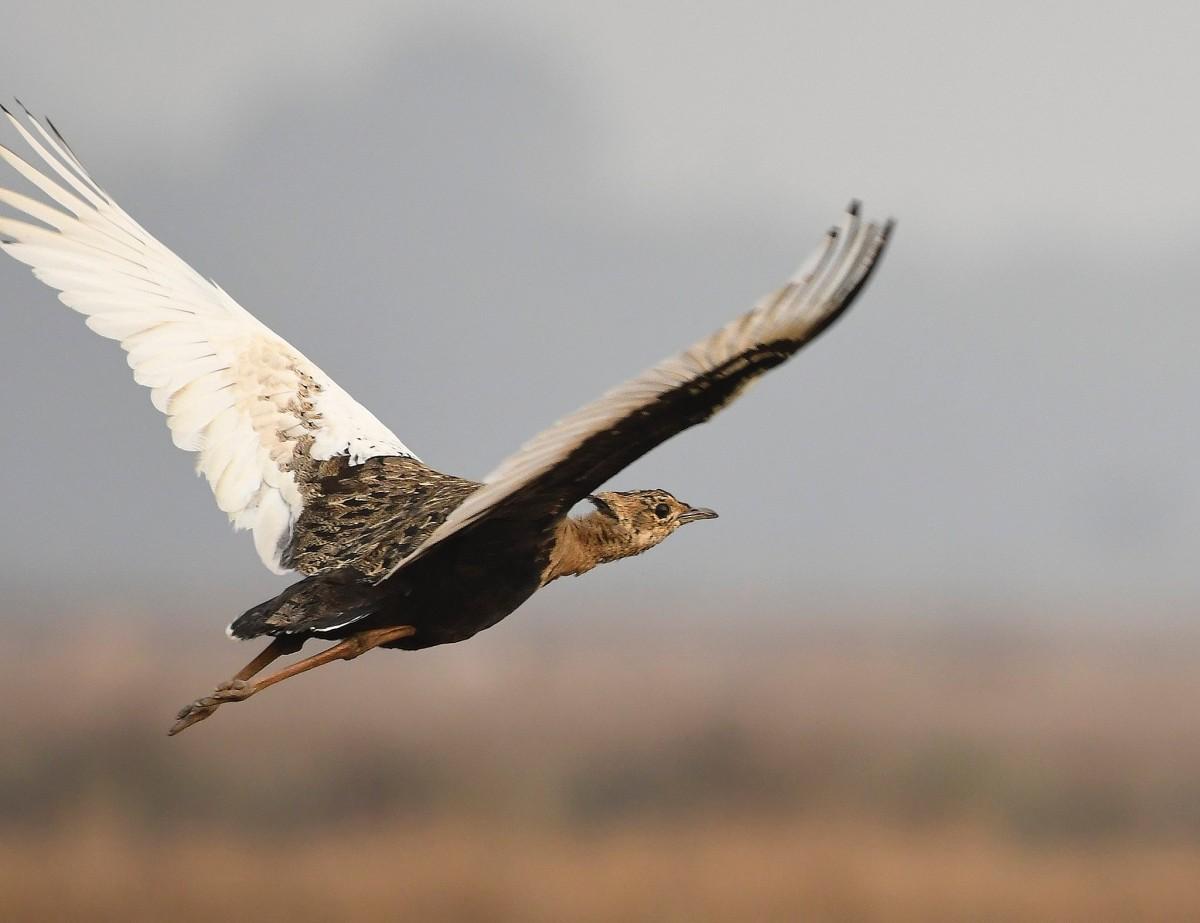

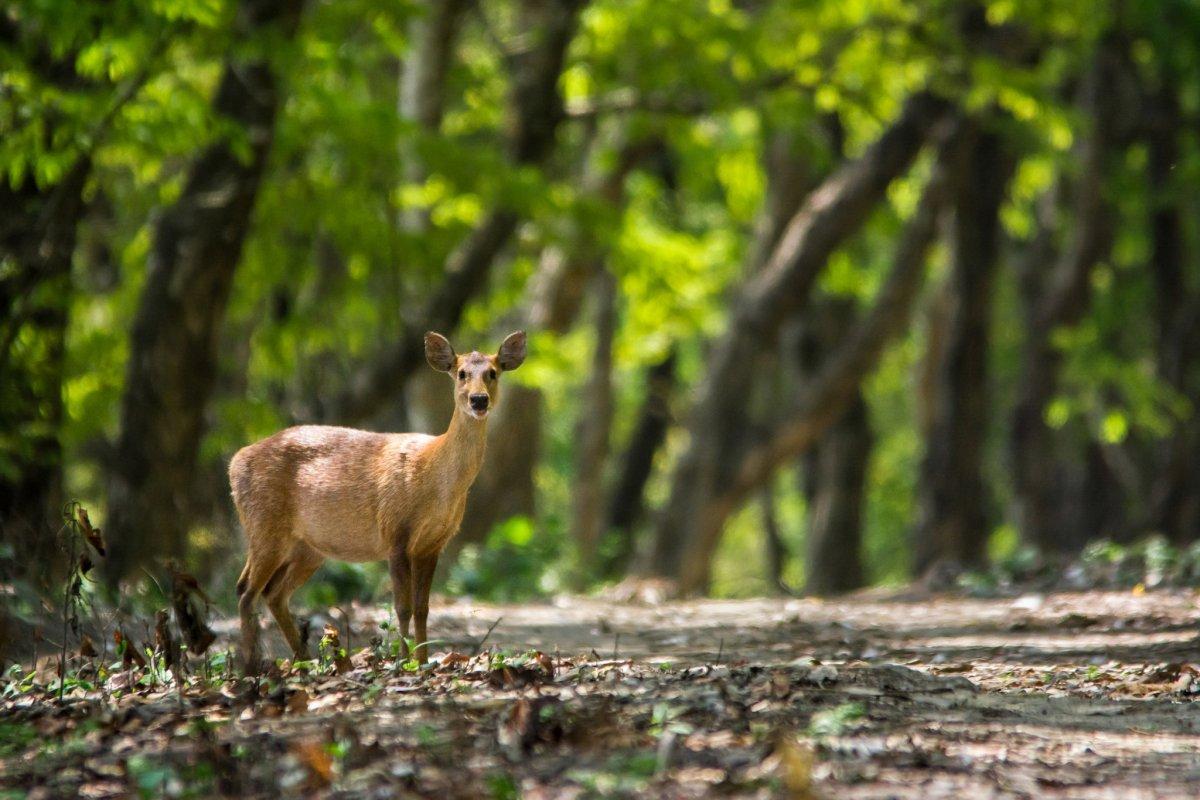
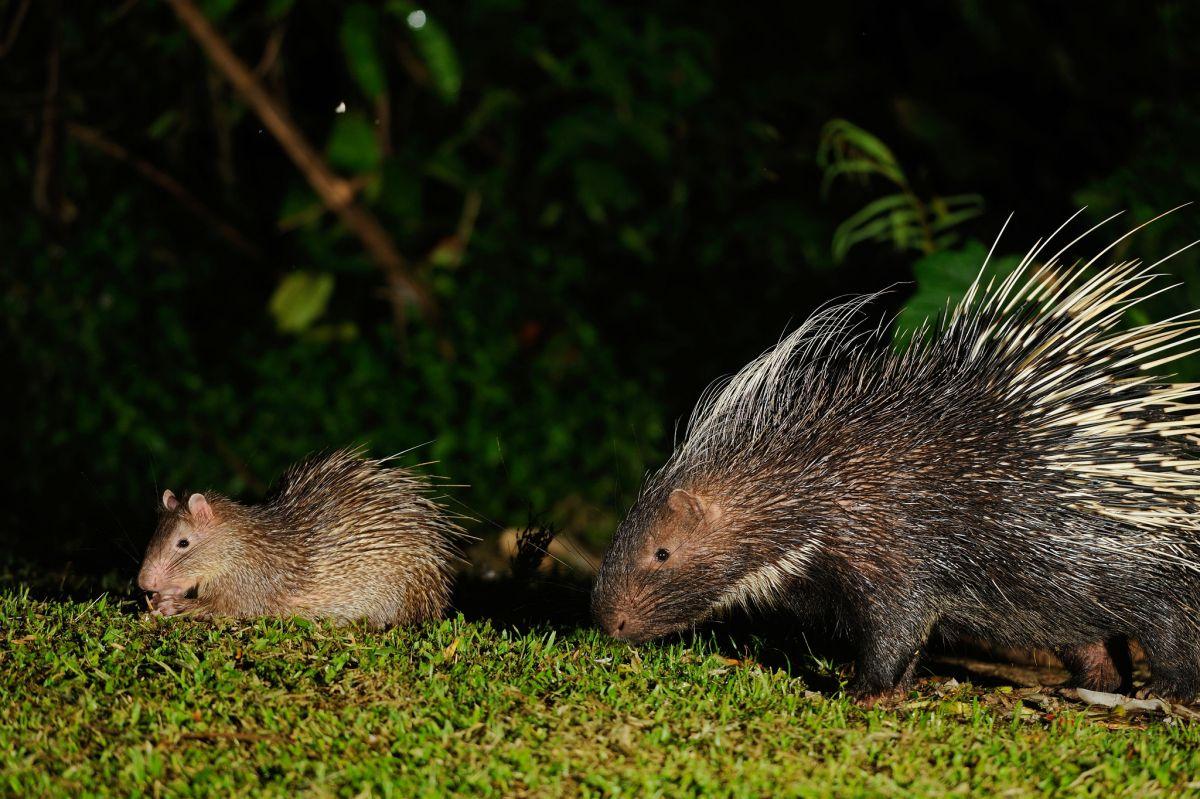

![13 Wild Animals in Tajikistan [Wildlife in Tajikistan]](https://www.kevmrc.com/wp-content/uploads/2022/12/13-wild-animals-in-tajikistan.jpg)
![22 Wild Animals in Estonia [Wildlife in Estonia]](https://www.kevmrc.com/wp-content/uploads/2022/06/22-wild-animals-in-estonia.jpg)
![14 Wild Animals in Northern Ireland [Wildlife in Northern Ireland]](https://www.kevmrc.com/wp-content/uploads/2022/10/14-wild-animals-in-northern-ireland.jpg)